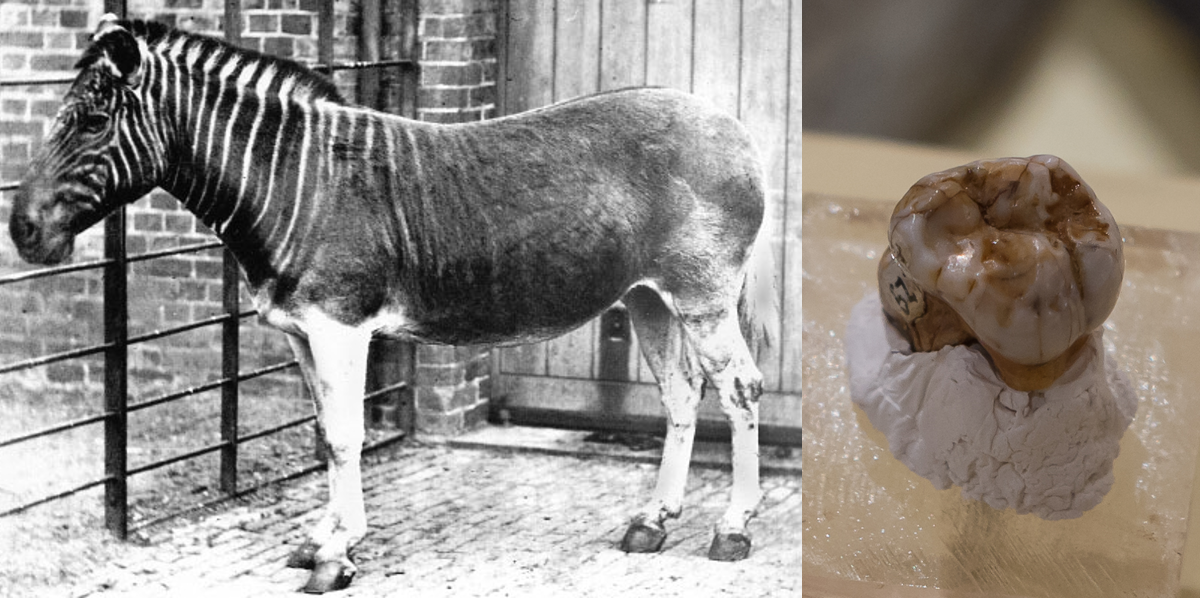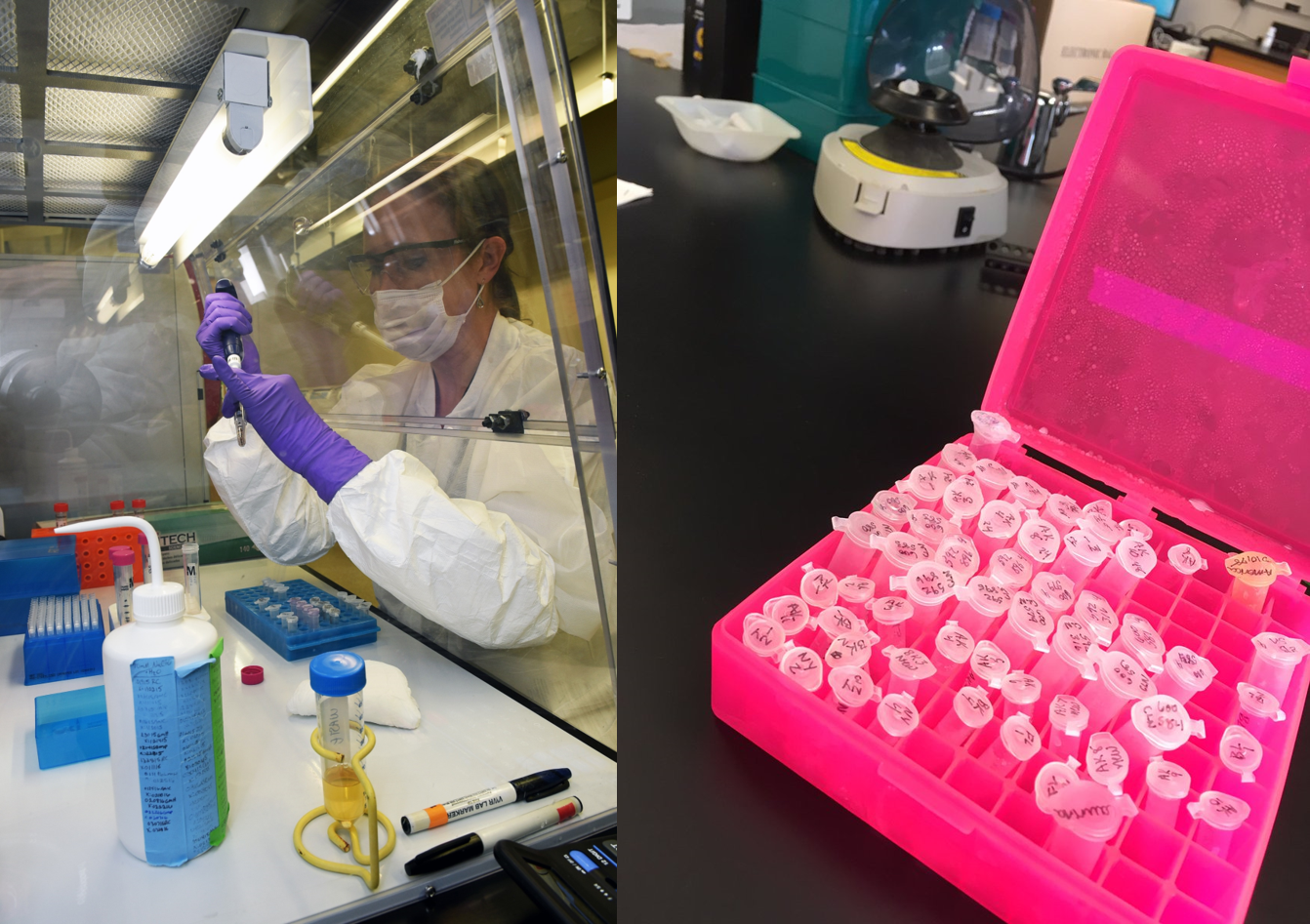Listen to Episode 34 on PodBean, Spotify, YouTube, or your personal preferred podcast platform!
Over the past three decades, a particular field of study has been revolutionizing our understanding of the past, driven by advances in technology and good ol’ scientific persistence. This episode, we discuss Ancient DNA.
In the news
This early Triassic croc-line archosaur finally gets an official name.
An incredible series of footprints might record humans hunting ground sloths.
Ongoing evolution has granted free-diving people more efficiency underwater.
Our friends at the Gray Fossil Site have discovered the oldest known wolverine.
Ancient DNA
DNA is the molecular “blueprint” of the body, a string of molecules (nucleotides) that direct the functioning of cells. Ancient DNA is genetic material extracted from long-dead (that is, decades to millennia old) organisms.

It wasn’t until 1984 that scientists published the first successful attempt to extract DNA from long-dead cells: the century-old remains of an extinct zebra called a quagga. From there, the field took off in a big way. From the early days of sequencing tiny fragments of decades- to centuries-old remains, researchers have come to sequence entire ancient genomes, as far back as hundreds of thousands of years (the oldest ancient genome known is from a 700,000-year-old horse), and have even discovered new species based on ancient DNA such as the famous Denisovan people.

DNA Preservation
DNA breaks down if left to its own devices outside a functioning cell, but this decay is exacerbated by water, light, heat, microbes, and more. The best places for DNA to hang on for a long time are places that are stable and safe from disruption. Permafrost is great. Caves are good. Ancient DNA from warm wet environments is much rarer, but not unheard of. In ideal natural conditions, it’s estimated that DNA might be able to survive (and remain be sequence-able) for up to one million years or more!

In the Lab
In the lab, DNA is often kept in cold storage to keep it as pristine as possible.
Pulling DNA out of an ancient bone, tooth, hair, etc. involves a long set of steps: a list of chemical treatments separates the DNA out from other materials, labels the DNA researchers want to target, replicates that target DNA over and over for analysis, and then identifies the genetic sequence (the As, Cs, Gs, and Ts), and it’s all done with careful procedures dedicated to preventing contamination of the samples (DNA gets everywhere – most ancient fossils are going to end up with some human DNA on them at some point!).
And that’s the super-simple version! There are many different methods for working with aDNA, conducted by labs all over the world.
Big thanks to Dr. Leigha Lynch for sharing with us her own experience working with aDNA!
aDNA Research
Ancient DNA has the potential to teach us so much about the past. Here are some of the cases we mentioned in the episode:
The oldest ancient genome (so far) – a 700,000-year-old horse.
Genetic surprises from Otzi the Iceman!
Darwin’s mystery fossil – Macrauchenia – repositioned on the mammal family tree
aDNA leads researchers to give the extinct stilt-legged horses their own genus
More about the Denisovans
The Legal Case of Kennewick Man
Tasmanian tiger (Thylacine) populations were in decline for a long time before their extinction
Ancient DNA from a tropical tortoise from the Bahamas
aDNA can even be found directly in ancient soil
More Resources
Hagelberg et al. 2015. Ancient DNA: The First Three Decades (a somewhat technical historical overview)
The Incredible Science of Ancient DNA (non-technical)
How ancient DNA is transforming our view of the past (non-technical; especially focused on human history)
The 2012 study that calculated the natural decay rate of DNA: Allentoft et al. 2012
Here’s the study on DNA preservation in amber that David mentioned.
There’s a lot of info on the field of ancient DNA on the ISOGG Wiki.
—
If you enjoyed this topic and want more like it, check out these related episodes:
- Episode 147 – Genetics
- Episode 18 – Human Evolution
- Episode 23 – Jurassic Park
- Episode 30 – Prehistoric Poop
We also invite you to follow us on Twitter, Facebook, or Instagram, buy merch at our Zazzle store, join our Discord server, or consider supporting us with a one-time PayPal donation or on Patreon to get bonus recordings and other goodies!
Please feel free to contact us with comments, questions, or topic suggestions, and to rate and review us on iTunes!
Ancient DNA will return.
Technically not ancient DNA because it’s RNA but… that’s an adjacent topic right?
I’m still blown away by the researchers who got viable influenza RNA from the 1918-19 pandemic from burials in permafrost of people who were known to have died from it.
LikeLiked by 1 person